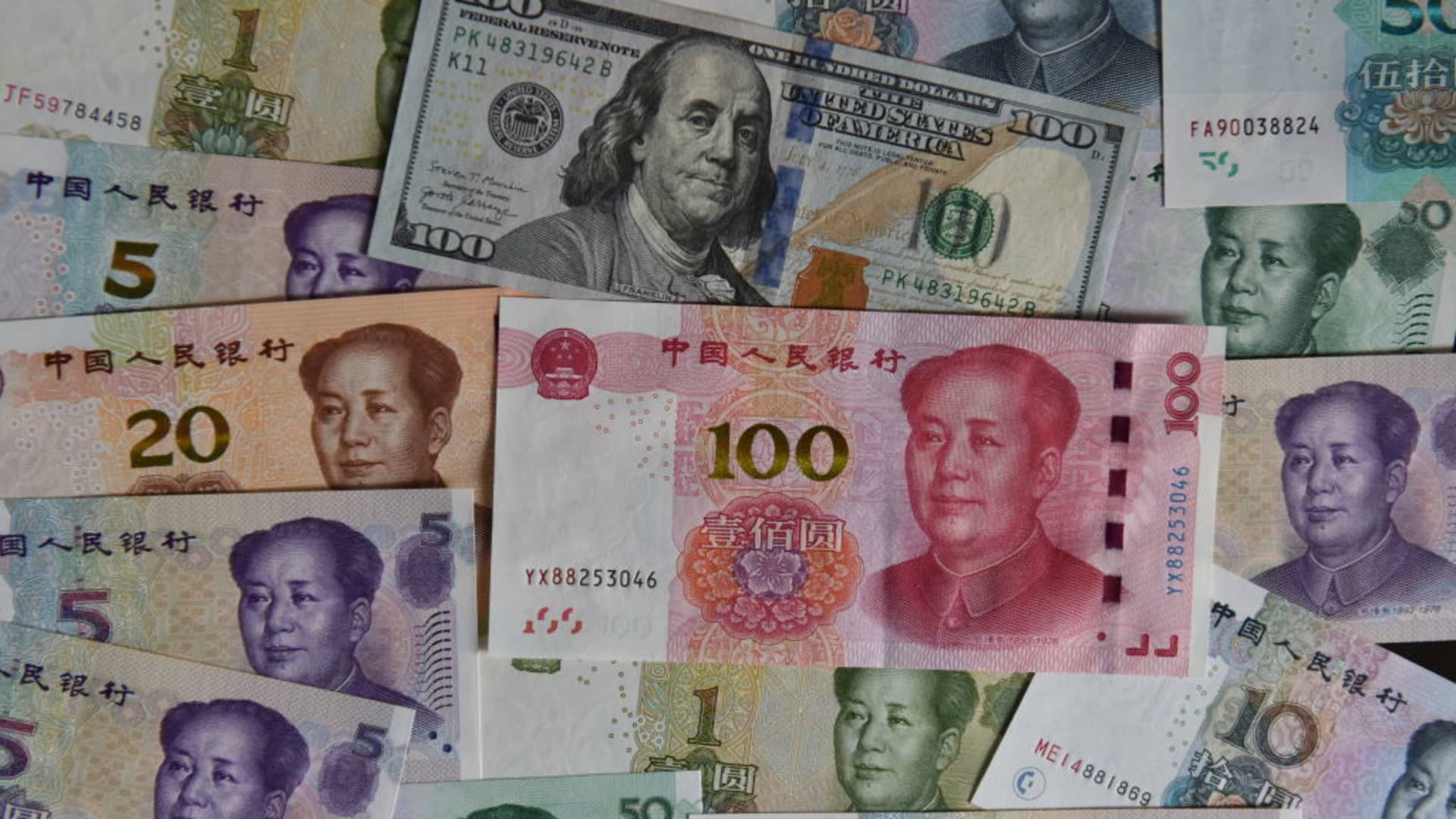Photo taken on Aug 17, 2023 shows US dollars and Chinese yuan in Fuyang city, East China’s Anhui province.
Nurphoto | Nurphoto | Getty Images
The People’s Bank of China set the onshore yuan midpoint at 7.2006 against the U.S. dollar on Friday — more than 1,000 basis points stronger than Reuters’ estimate of 7.3065 per dollar.
This is the second straight day that the fixing rate was above 1,000 points stronger than the Reuters forecasts, and caps off four straight days that the midpoint rate has been almost 900 basis points stronger than the forecasts.
A day earlier, the Chinese central bank fixed the midpoint at of 7.2046, versus Reuters’ estimate of 7.3047.
The yuan midpoint is a reference point for trading, and caps the range between +2% and -2%. That means the yuan, also referred to locally as the renminbi (RMB), is allowed to trade 2% above or below the fixing rate each trading day.

Friday’s move comes after the onshore yuan fell to a 16-year low against the greenback on Wednesday, trading at 7.2981.
The onshore yuan strengthened 0.1% against the greenback at 7.2836 on Friday, and the offshore yuan weakened marginally to 7.3057.
The onshore yuan is traded on the mainland and referred to as the CNY, while the offshore yuan — traded in markets like Hong Kong and Singapore — is referred to as the CNH.
Vishnu Varathan, head of economics and strategy for Asia and Oceania at Mizuho Bank wrote in a note that intervention risks for the onshore yuan is heightened as “China’s sputtering growth and financial risks undermining CNY stability.”
He said that in the medium term, the onshore yuan may face headwinds, adding that “fraught geopolitics amid economic gloom and financial risks may durably stress the CNY.”
Reuters reported Thursday, citing people with direct knowledge of the matter, that Chinese state banks were seen selling U.S. dollars to buy yuan in both onshore and offshore spot foreign exchange markets this week. Doing so typically slows the yuan’s depreciation.
On Thursday, the central bank said in its second quarter monetary policy implementation report it would “maintain reasonable and sufficient liquidity,” and keep its policy “precise and powerful” to support the country’s economic recovery.
Regarding the exchange rate, the PBOC noted in the report that foreign exchange settlement and sales for the renminbi were “rational and orderly,” and market expectations were “stable.”
It vowed to “maintain the basic stability of the RMB exchange rate at a reasonable and balanced level, and resolutely prevent the risk of exchange rate overshoot.”

China maintains strict control of the onshore yuan, fixing it with a so-called daily midpoint fix to the greenback based on the yuan’s previous day closing level and quotations taken from inter-bank dealers.
It is unlike other major currencies like the U.S. dollar or the Japanese yen, which have a free floating exchange rate.
The onshore yuan is allowed to trade within a narrow band above or below the day’s midpoint rate. If it deviates too far, according to some market watchers, the Chinese central bank will step in to buy or sell the currency, putting a lid on its daily volatility.

